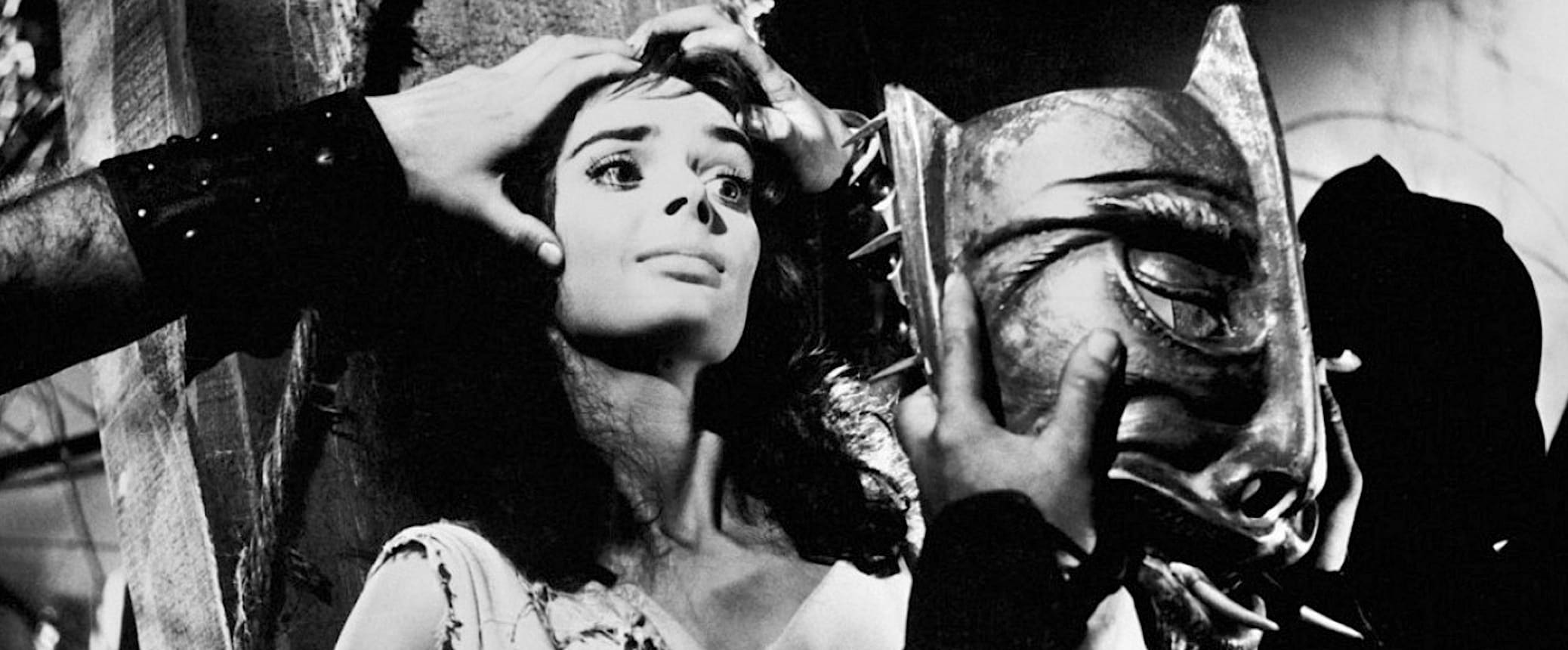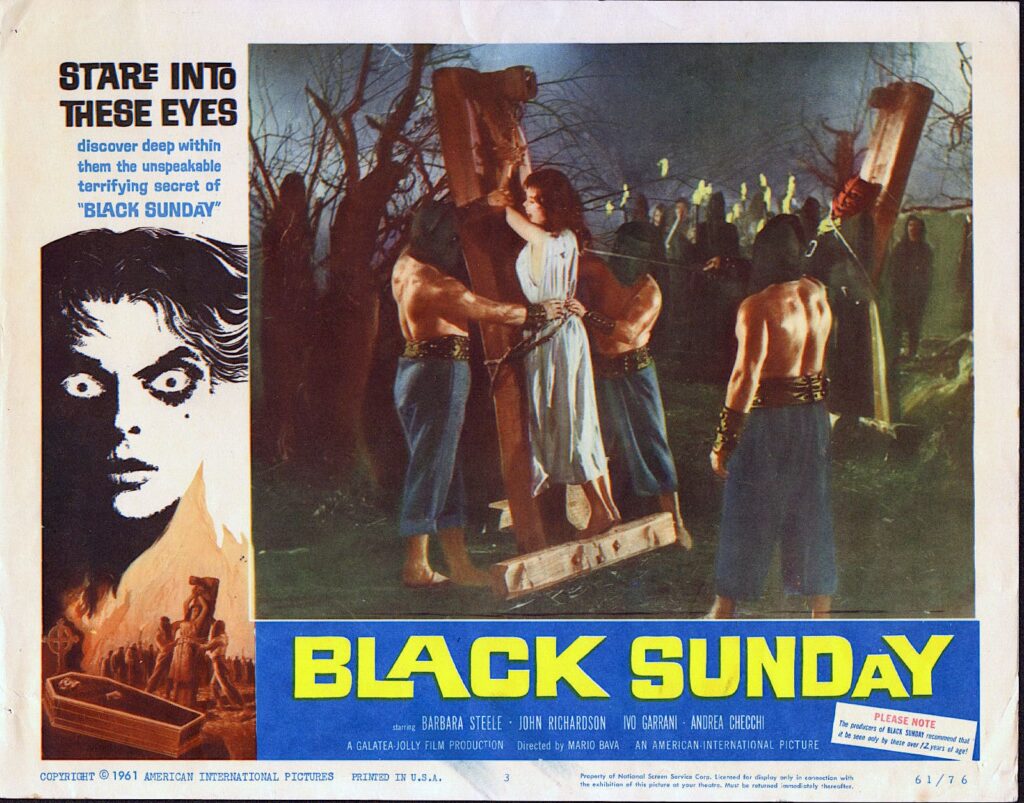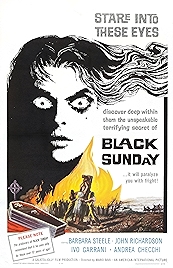1960’s Black Sunday (aka The Mask of Satan aka La Mascera del Demonio) is an amazingly productive film. It put a shot in the arm of the Italian horror biz – in terms of crowd-pleasing genre movies it had been mostly swords and sandals up till then. In Mario Bava it created Italy’s pre-eminent horror maestro – and this was his debut feature as director. And it also turned Barbara Steele, a Rank contract player, into an icon of the Italian horror scene.
The inspiration is Nikolai Gogol’s story Viy, about a witch who can manifest either as a crone or a virgin attempting to come back to life and being prevented from doing so by a young priest (see Konstantin Ershov’s 1967 movie Viy for more on that). But Viy is largely eclipsed by Dracula in its tale of an undead witch, sometimes referred to as a vampire, who is afraid of crucifixes and sucks the blood of its victims to gain strength. Bava was making Black Sunday in the wake of the huge success of Terence Fisher’s 1958 Dracula, starring Christopher Lee, and his producers were keen for some of that action, thanks very much.
Hence the very familiar Van Helsing-like character of Dr Kruvajan (Andrea Checchi), and the younger Jonathan Harker-like Dr Gorobec (John Richardson), a pair of medics en route to a conference who get diverted to a remote village where a witch, 200 years earlier, had been incarcerated wearing the gruesome “mask of Satan” (it has spikes on the inside and we see it being hammered onto her face in the pre-titles sequence). These men of reason, blithely cutting through centuries of what they see as mumbo-jumbo, have in no time at all inadvertently initialised the process that will bring Princess Asa back to life.
Using her descendant Princess Katia as a conduit, Princess Asa hopes to complete her reincarnation and then… look out, world.
Bava was offered the chance to shoot in Technicolor, which had done so much for Fisher’s Dracula, but insisted his film should be in black and white. His decision is justified by the results and the chiaroscuro imagery is the real standout of the film, which can hardly boast an original story or great acting.
The post-dubbed sound is a stumbling block too. Steele and Richardson speak in English but most of the other actors are speaking in Italian, so dubbing was necessary whichever way you look at it. But it’s badly done, and causes the film to teeter at the edge of unwatchability in the action sequences, where mistimed dubbing really confuses and holds things up.
There are bad wigs and worse beards and it’s easy to find fault, but Bava’s command of atmosphere is total and his technical skill behind the camera is plain to see.
Steele fits the bill as both the virginal princess and her undead counterpart, in a twin role she was worried would offer Bava two opportunities to get her naked onto the screen. Lads, it does not happen, though Bava flirts with the idea, and with us.
It is shriekingly gothic, with suits of armour, howling wind, gigantic candles, dark corridors, weeping women, secret passages, dark recesses and lots of dramatic music. Special effects are used sparingly and inventively. I think it’s poached eggs being used as the eyes of Princess Asa as her skull starts to reconstitute itself. Bava’s decision to shoot in black and white again vindicated here – the sets were apparently monochrome too, just to enhance the effect.
Watch it as a companion piece to Dracula and it’s doubly rewarding. Watch it also with the knowledge that only a handful of years earlier Mussolini had banned the production of horror films entirely. Be wary of regimes that don’t like “bad news” and confuse the story (evil abroad) with the message (good and god triumphant).
Black Sunday – Watch it/buy it at Amazon
I am an Amazon affiliate
© Steve Morrissey 2023


